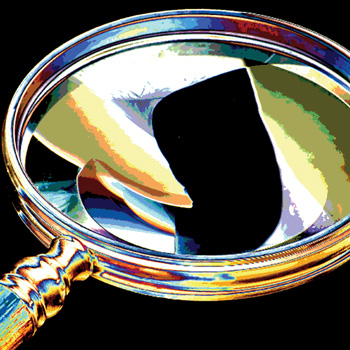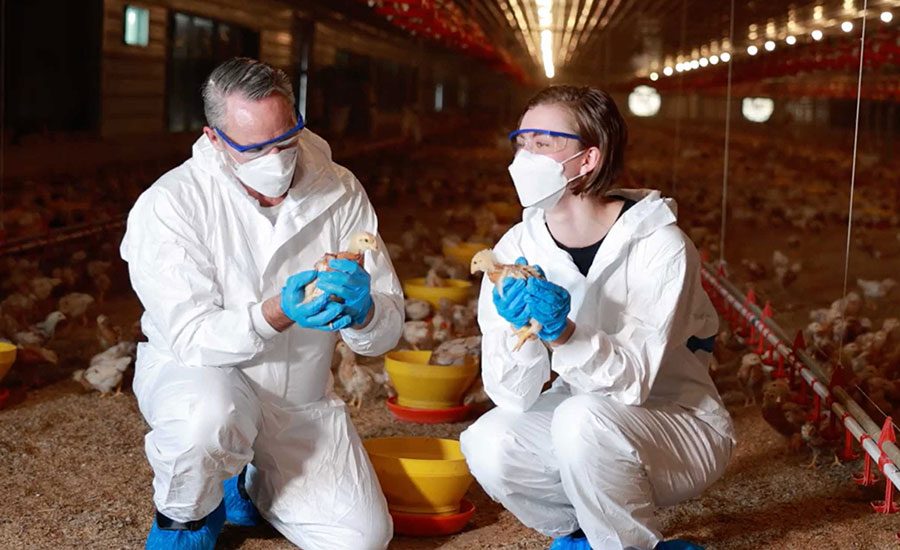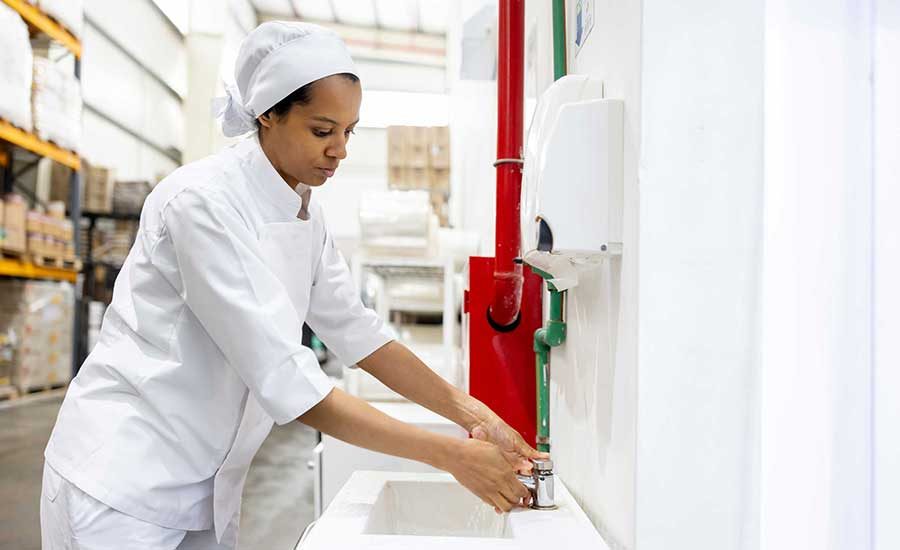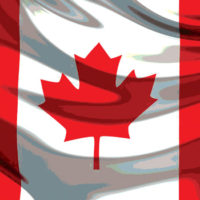There is a common thread that is woven throughout our industry, and that is the function of inspection. The act of inspecting is the core activity universally performed by public health sanitarians at all levels of government. In fact, we often define ourselves as “Health Inspectors,” a descriptive phrase used worldwide, regardless of the language. However, what makes this task unique in the U.S. is the fact that training is almost entirely focused on code interpretation, while the actual act of inspecting is left to the individual to learn by following a mentor, who also learned from a mentor or by trial and error. There is very little formal instruction on the art and science of inspection, with the notable exception of inspectors in the military. If a new public health sanitarian is lucky, his or her mentor will have perfected this practice and will pass along the routine in a correct manner.
Unfortunately, there are neither courses that are readily available to provide instruction in this important skill nor any printed guidelines on the actual performance of conducting food safety-related inspections. Academia does not think it important enough to add this to their environmental health curricula, even though it is defined as a basic skill set for the graduate who aspires to become a sanitarian. I am aware of no formal textbooks on this topic, with the exception of a single, wonderfully written paperback book that deals with this subject in a broader, albeit peripheral manner. The book, Some Observations on Food Hygiene Inspectors, was published in 1999 by Chadwick House Group, Ltd. Although it was written by Dr. Richard North, a practicing Environmental Health Officer in the British Commonwealth, it is packed with good information presented in a light, non-stodgy manner and should be required reading for everyone who professes to be a sanitarian in regulatory practice.
So, unless the fledgling inspector’s mentor was well trained or learned by making and correcting his or her own mistakes, the convention of the act of inspection is by no means uniform; at best it is unpredictable and at worst, a poorly performed inspection can actually do more harm than good.
The Need for Training
Before I offer some suggestions on the conduct and performance of inspections, I would like to relate a recent account that reinforces the need for formal training in this arena. I received a call from a food manufacturer, asking for my counsel and presence at his plant during an ongoing FDA inspection. The purpose of the inspection was certainly valid. It was a follow-up to a recent ingredient recall. However, the conduct of the inspection was not exactly the gold standard that one would expect from a government agency. The inspection was conducted by a small army of state and federal employees, most of whom were allegedly “in training.” Because so many individuals descended on the small plant, they had to split into two teams, and my client had to cease production operations to allow supervisory personnel to be with the inspectors as guides and to answer questions. Even though this inspection was not in response to a complaint, nor were food-contact surfaces, end lines, finished products or employees monitored, the on-site activities disrupted production for the better part of two weeks. As if this interruption was not enough, the hoard of inspectors and trainees went from clean, traffic-restricted areas to areas open to the environment and back again. While they wore hats and lab coats, they wore no shoe covers and most did not remove their jewelry before entering the plant. Apparently, hand washing was optional. The microbiologist reportedly chewed gum the entire time he was on site. Therefore, if any contamination was found, it certainly would be questionable where the contaminant(s) had originated from.
In addition, the FDA inspector could neither share any specific information on what he was looking for nor could he inform us on his findings or the results of any environmental samples that were taken. I’m sure the FDA had its reasons, but my phone call to the regional office requesting answers and an insight into the data remained unreturned. The state inspector knew very little about this inspection, other than that they were the licensing agency, and therefore was of little help to my client.
So, here was an “inspection” in which new inspectors were being trained in poor techniques and where the inspection process itself posed and increased a risk of introducing contaminants into the plant. Here was an inspection in which we were not allowed to know the specifics of the inspection process or learn of the findings in real time. Apparently, not even the inspectors knew. Here was an inspection during which my client had to unnecessarily cease production to accommodate the whims of the inspectors and their training process—which, by the way, was done without the courtesy of asking permission of the business owner. This less-than-stellar performance by regulatory personnel was the antithesis of professionalism and certainly was not the model for how to garner good will and cooperation. But one single aspect of this exercise was most egregious: had there been something amiss that could have posed a significant risk to public health, the inspection process denied us the information so that any serious deficiency could have been corrected promptly.
This incident is not unique in the regulatory community. I’m certain that it plays over many times, with many variations, in many jurisdictions and with many different players. Moreover, as of late, some inspections have evolved into “gotcha!” moments, rather than opportunities to significantly improve food safety and enhance the trust and dialogue between operators and regulators.
The question that needs to be asked by each of us in the profession is: do I feel comfortable as an inspector and can I do a competent job? In the short run, there is little we can do to change the culture of the industry. We can, however, reexamine the basics of the inspection process and hopefully raise awareness for future improvements.
Basic Definitions
Let us first examine the definition, purpose, objectives and goals of “inspection.” The dictionary defines inspection as “a checking or testing against established standards.” In our case, the foundation of established standards is generally the Food Code or current Good Manufacturing Practices. Because inspections are broad in scope and use established standards, they have to be objective. Objectivity dictates that inspections should embody scientific methodology that includes sampling and interpretation of observations. Each inspection is therefore a miniature thesis, complete with an introduction, methodology, results, discussion and references. The inspection format is risk-based, with emphasis on contamination control and safety. Because inspections are prescribed, the inspector is bound to stay within the agreed-upon scope unless the degree of risk necessitates other actions.
To put things in the proper context, please understand that an inspection is quite different from an audit, in that audits begin with a formal approach to examining products, systems and processes. While audits are impartial and objective like inspections, they are unlike inspections in that they have a defined methodology that is driven by a sequential order of activities and unique sampling criteria. These activities include identifying plans, making observations, evaluating the facts and reporting the results. Audits are basically driven by the contracting agency and are often a reaffirmation of pre-determined criteria that may include the degree of adherence to policies such as Hazard Analysis and Critical Control Points (HACCP) and Sanitation Standard Operating Procedures. Therefore, an audit is a process of investigation and of examining evidence to determine whether agreed-upon requirements specific to that operation are being met.
In contrast, an evaluation is performance-based and goal-oriented. It relies on personal expertise and may be quite subjective; there is neither a defined methodology nor a sequential order of activities to get to the intended results. This may explain why evaluations are generally performed by experts and consultants.
The Inspection Process
The purpose of an inspection is to identify the change in circumstances or arrangements when measured against established standards. In effect, a comprehensive inspection identifies failures in equipment and procedures, policies and practice or human error.
There are two objectives of inspections. The primary objective is to determine whether controls are adequate to meet requirements. Simply stated, this objective can be met by performing an abbreviated plan review that begins with a menu or product line review and is followed by a cursory evaluation of whether the physical plant can safely support the production, including but not limited to storage and sanitation operations. Once established, this primary objective goes on to determine whether controls are effectively implemented and maintained. Here we use scientifically based sampling techniques and field instrumentation to look at time, temperature, water activity, pH, measurements of cleanliness and any special conditions that could possibly compromise food safety. In doing so, we are in effect performing a Street HACCP review that focuses on principles 1, 4 and 7—namely, conducting a hazard analysis, evaluating monitoring procedures and reviewing record keeping and documentation procedures.
The second objective of an inspection is to identify areas of potential improvement, to evaluate the effectiveness in meeting basic regulatory requirements and to determine the facility’s ability to meet those requirements. What we hope to accomplish with this objective is to develop a culture where regulatory requirements are seamlessly integrated into production and service. If this second objective is met, the operator essentially becomes the regulator. This is a sharing and teaching opportunity that is absolutely vital to the successful outcome of the inspection process and indeed, the improvement of public health.
The primary goal of an inspection is to develop a predictive model. A numerical or letter score of the outcome, where the deficiencies are weighed against the established standards, gives us that predictive model in basic terms of risk of foodborne misadventures. To eliminate initial bias in determining this risk, an inspection should always begin with the null hypothesis. In simplest terms, the inspection begins with the assumption that the operation being inspected meets all established standards and that this is treated as valid unless the actual findings and data contradict this assumption. The primary goal is actually met by gathering empirical evidence through sampling and instrumentation, followed by weighing and verifying those findings, analyzing the results, creating a risk model and making recommendations—in other words, by creating an abatement plan.
The Abatement Plan
In formulating an abatement plan, there are two approaches that are considered simultaneously in specifying recommendations. These include closed-ended and open-ended requirements in both observation and subsequent language.
The closed-ended types are objective and contain very specific findings and prescriptive requirements. For instance, time, temperature, illumination levels, ventilation, hand-washing frequency, sanitizer concentration or anything else that is measurable is a closed-ended requirement. Any recommendation would therefore detail a specific end point.
On the other hand, an open-ended requirement provides maximum flexibility in interpretation. For instance, the use of open-ended words such as “timely,” generalized statements such as “manage” or “control” or unclear or undefined words such as “suitable,” “exercise care” or “adequate” leave much to interpretation. Where words and phrases lack specified, verifiable actions or outputs, or, where no prescriptive requirements are specified, compliance becomes virtually impossible because every person sees these words and phrases through different definitions and interpretations.
The formal inspection process teaches us that open-ended decisions beg for resolution. Where objectivity is difficult because of the vagaries of regulatory language or the lack of definition, physical examination must include observing activities, interviewing and corroborating information to the best of the inspector’s abilities to provide a factual basis for all ambiguous findings. This makes for a perfect segue to sampling and presentation of data.
Selecting Sampling Sites and Samples
In selecting sampling sites and samples in the course of a formal inspection, the overriding questions that must be answered are the following: Would the act of sampling or testing at a given site disturb the environment sufficiently to cause erroneous data to be collected or contaminate the product or process? Regarding the sample itself, is the act, process or technique of selecting the sample representative of the source under investigation? The art of conducting a formal inspection includes not only the selection of the sampling sites, but also justification for selecting probability or non-probability sampling strategies, such as random, judgmental, sequential, convenience, snowball, etc. It also includes ensuring sample integrity with documentation and chain-of-custody when necessary.
In the presentation of sampling data, the integrity of documentation should include the following components: an introduction and statement of purpose. Without these, sampling merely becomes a “gotcha” exercise where samples are taken until a deficiency is found. Data that accompany the samples should include a description of ambient conditions, activities and anything else that is deemed relevant, including the sampling site and any difficulties encountered in obtaining the sample or taking the measurement. The date and time, person(s) on site and any additional comments must accompany any sample or measurement to ensure validity of the final abatement plan.
Classification of Observations
At the conclusion of the inspection, the data and findings should be sorted based on importance, significance and relevance. Sorting by importance can also be judged based on type: quantitative data, such as repeat occurrences, versus qualitative data, such as one-time occurrences, carry high risk. Nonconformity should be listed in order of violation of a requirement: major versus minor. Any findings of systematic problems should be supported by observation. Listing improvement points creates an opportunity for the operator to make improvements and not a violation. Although they are important, they are separated from the nonconforming issues. Concerns or issues that may pose possible future problems should also be handled separately.
In crafting the language of the inspection report, ensure that it is consistent with the inspection evidence, and that the evidence is based on fact. Avoid using emotional words and phrases and words that may create the appearance of bias or a slanted viewpoint.
Professionalism
Deportment during an inspection must reflect professionalism. It is essential to understand the requirements in the regulations and standards being inspected against. Each inspector has an obligation to state the purpose of the visit at the onset of any inspection. While it sounds easy on paper, it is not always easy in practice. If we are there to ensure food safety, we should state that from the onset. If we are there because of regulatory requirements or in response to a complaint, or simply to find fault, we need to state that as well. Honesty and completeness of opening statements are essential to establishing rapport and garnering cooperation.
The presentation of identification and a business card at the onset of an inspection is as important as our appearance. An official, full-color picture I.D. and embossed business cards will not make up for a tie-dyed tee shirt, jeans and a logo-emblazoned gimme cap. Dress appropriately. It may sound old-fashioned, but a first impression is a lasting one. White shirt (and tie), clean safety shoes, appropriate head covering (and beard covering if needed), vinyl or nitrile gloves (not latex) and other personal protective equipment, such as a lab coat, shoe covers, safety glasses, boots, etc., are needed. Professionalism also applies to personal care, such as removing jewelry and washing hands at the beginning, during and at the end of the inspection. It is the inspector’s responsibility to set the example.
Foremost is the observance and demonstration of good contamination control and safety practices during the inspection. Always comply with establishment rules. While it isn’t always easy, the inspection process should follow the path from cooked to raw by beginning at the front of the house and finishing in the back of the house. Good contamination control practices during an inspection dictate movements from clean to soiled and from dry to wet. Finally, it is the inspector’s obligation to always observe personal safety practices and never compromise the safety of others. All food manufacturing, including retail operations, contain hazardous equipment, hot surfaces, unguarded pinch and shear points, slippery surfaces, etc. Awareness of the surroundings is key to the safety of everyone, including the customers.
Whether one believes in announced or unannounced inspections, professional courtesy dictates placing a brief phone call to determine the best time for an inspection. By simply stating that one wants to see the facility in full operation, but not interfere with heavy traffic patterns at peak times, an inspector is more to receive an accomodating—and grateful—response from the operator. Consider also the distance and travel time to the site, their hours and scope of operation (including multi-shifts), and the facility’s internal operating schedule when preparing for a visit.
General Rules of Conduct
There are a few rules of conduct that are universal to inspections. The most important is never to discuss findings anyone other than the designated contact person. It is their decision whether to include anyone else in the deliberations. In addition, never disclose proprietary information to others. This is not always easy to achieve because the proprietary information may be part of the inspection report. If there is a question about language, the contact person should be consulted. The inspector has an obligation to be honest and impartial by avoiding conflicts of interest. When unethical activity is observed, it should be verified, recorded and reported. Inspectors should protect any property entrusted to them. And, as much as time and circumstance permit, the inspector should always communicate the progress of the inspection.
Reporting
Report results of the inspection truthfully and in a clear, concise and complete manner. Verify nonconformance issues and communicate the importance of findings. There is a reason for everything in regulation. It is the inspector’s obligation to interpret those reasons specific to the operation under investigation. Ensure that all results are traceable to the requirements. This is the area in which most mistakes are made. Reporting minor imperfections found during the inspection and reporting individuals are not germane if there is no added value. Although not a requirement, every inspection should list positive practices or noteworthy achievements that include some aspect of the operation, system or process that is done very well.
Finally, no inspector should take ownership of problems found but serve as an information conduit. Examples of this would be putting the operator in touch with other businesses that faced similar problems and solved them in a cost-effective manner, suggesting appropriate vendors and services and, if applicable, providing resources, such as printed information, notices of training opportunities, new developments and code interpretations or anything else deemed educationally appropriate.
The Bottom Line
I have by no means exhausted this topic. It is at best a cursory overview and hopefully a beginning. If we expect our regulators to protect our food supply and build confidence in the food production and food retailing industries, we need to provide them with the knowledge, skills and attributes necessary for them to do their job effectively. We all prefer that the outcome of the regulatory process is because of, rather than in spite of, their actions. This may sound harsh, but until there is uniformity in the process of enforcement, these outcomes will remain random. Apart from the sanitarian learning about the interpretation and nuances of regulation, the science of environmental microbiology and the fundamentals of sanitation, he or she also has to learn the skills necessary to conduct an inspection that includes sampling and acquire the skill to apply and communicate this knowledge.
“Inspection” is the single fundamental aptitude we universally expect from people in our profession, yet it is the only competency that is neither standardized nor has become part of the formal learning process. Like any other skill, the art and science of inspection must be learned and practiced. Collectively, we in the food safety industry need to ensure that is done correctly.
Forensic sanitarian Robert W. Powitz, Ph.D., MPH, RS, CFSP, is principal consultant and technical director of Old Saybrook, CT-based R.W. Powitz & Associates. He can be contacted at Powitz@sanitarian.com.
Taking a Closer Look at Inspections

Looking for a reprint of this article?
From high-res PDFs to custom plaques, order your copy today!





